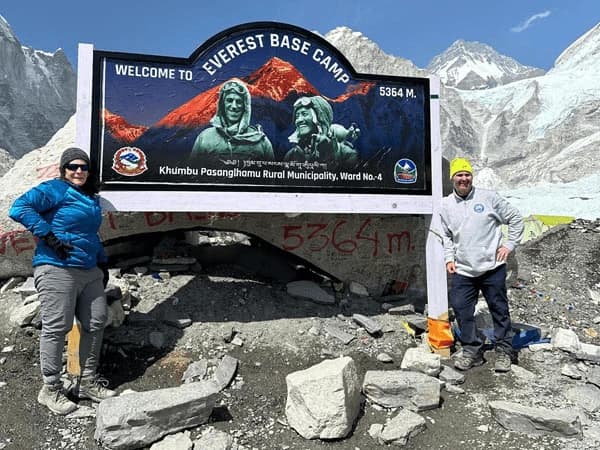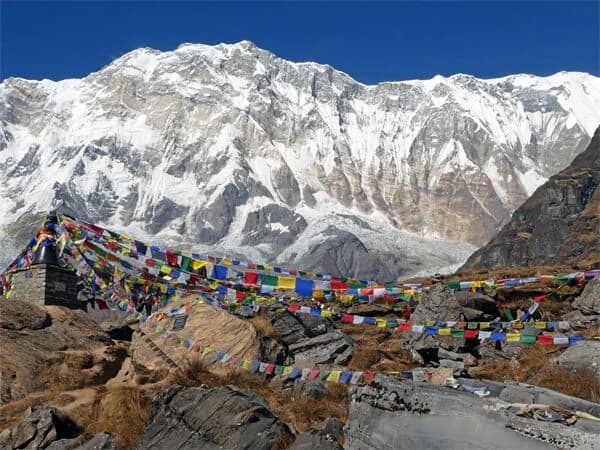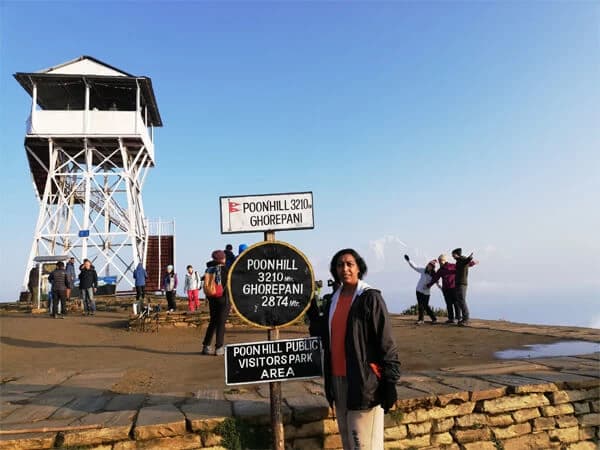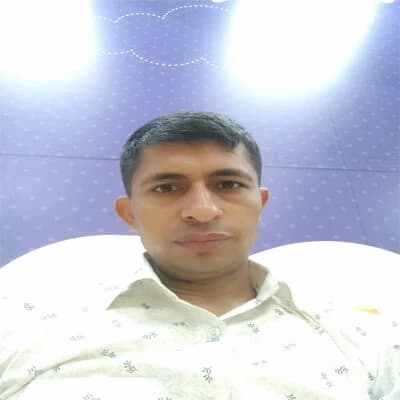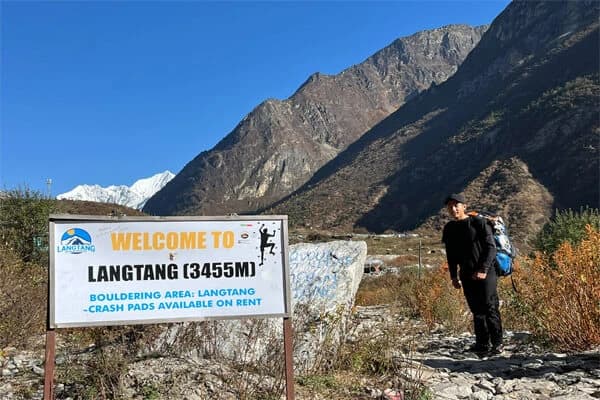Nepal is renowned as one of the best trekking destinations in the world, attracting adventurers, nature lovers, and cultural enthusiasts. This country is home to eight of the world’s fourteen highest peaks, including Mount Everest (8,848m). It offers an unparalleled trekking experience through diverse landscapes, from lush forests and terraced fields to alpine meadows and icy glaciers. The most popular trekking routes in Nepal provides an opportunity to witness breathtaking Himalayan vistas while immersing oneself in the country’s rich cultural heritage.
Trekking in Nepal is not just about reaching the base of towering peaks but also about experiencing the hospitality of the Sherpa, Tamang, Gurung, Thakali and local communities. These ethnic groups have thrived in the mountains for centuries. Their warm hospitality, ancient traditions, and unique architectural styles add a cultural dimension to the trekking experience.
The most popular trekking routes in Nepal range from easy and short treks suitable for beginners to challenging and remote treks for experienced trekkers. Whether it’s the world-famous Everest Base Camp Trek, the scenic Annapurna Circuit, or the culturally rich Upper Mustang Trek, every trekking trail in Nepal offers a unique blend of natural beauty and cultural exploration. Nepal trekking is an adventure that promises stunning views, spiritual connections, and a deep appreciation of nature.
Key Factors to Consider for Best Trekking routes in Nepal
Several factors help to determine the popularity of trekking routes in Nepal. Here are some key considerations:
- Scenic Beauty: The breathtaking views of mountains, valleys, forests, and rivers play a significant role. Routes offering iconic mountain views, such as the Everest Base Camp and Annapurna Circuit, are highly popular.
- Cultural Experience: Treks that provide opportunities to interact with local communities and experience their traditions, festivals, and lifestyles, like the Langtang Valley Trek, attract many trekkers.
- Accessibility: The ease of reaching the starting point of the trek, availability of transportation, and infrastructure along the route, including teahouses and lodges, impact the popularity. Well-developed routes with good facilities are preferred by many trekkers.
- Trekking Duration: The length of the trek, from a few days to several weeks, influences the decision. Shorter treks may be more popular among those with limited time, while longer, more challenging treks attract seasoned trekkers.
- Altitude and Difficulty: Trekkers choose routes based on their experience level and physical fitness. Some may seek challenging high-altitude treks like the Everest Three High Passes Trek, while others prefer moderate treks with lower elevations.
- Safety and Weather Conditions: Safety is paramount. Routes with stable weather conditions and low risk of natural disasters are more popular. Favorable trekking seasons, such as spring (March-May) and autumn (September-November), also attract more trekkers.
- Unique Features and Highlights: Specific attractions like monasteries, wildlife, hot springs, and viewpoints contribute to the popularity. Treks that offer unique experiences or landmarks are often favored.
- Word of Mouth and Reviews: Recommendations from fellow trekkers, online reviews, and social media influence trekker’s choices. Positive feedback and testimonials can boost the popularity of a trek.
In this blog, we explore the most popular trekking routes in Nepal according to different categories including Everest Region Treks, Annapurna Region Treks, Langtang Region Treks, and Restricted and Off-the-beaten-path Treks.
Everest Region Treks
The Everest region is the most popular trekking routes in Nepal Himalayas. It draws thousands of trekkers each year who seek to witness the world’s tallest peak, Mount Everest. The trails in this region pass through Sagarmatha National Park, a UNESCO World Heritage site known for its dramatic mountain scenery, glaciers, and unique wildlife, including the Himalayan thar, musk deer, and elusive snow leopards.
Everest Base Camp Trek in Nepal
The Everest Base Camp Trek is the most popular trekking routes in Nepal. It offers the chance to stand at the base of the world’s highest mountain. The journey takes approximately 12-14 days and covers a distance of about 130km round trip. The trek starts with a thrilling Lukla flight, followed by an adventurous route passing through Namche Bazaar, Tengboche, Dingboche, and Lobuche before reaching Everest Base Camp.
Highlights:
- Breathtaking views of Everest, Lhotse, Nuptse, and Ama Dablam.
- Immersive cultural experience in Namche Bazaar, the gateway to Everest.
- Visit to Tengboche Monastery, the largest Buddhist monastery in the Khumbu region.
- Panoramic sunrise view from Kala Patthar (5,545m), offering the best close-up view of Everest.
- Trekking through diverse landscapes, from pine forests to glacial moraines.
- The Everest Base Camp Trek is a once-in-a-lifetime experience and a must-do for those passionate about Nepal Trekking.
Everest Base Camp Trek with Helicopter Return
For those who want to experience the Everest region but have limited time, the Everest Base Camp Trek with Helicopter Return is an excellent option. This trek follows one of the most popular trekking routes in Nepal, the traditional EBC trekking trail. However, it includes a helicopter ride from Gorakshep back to Lukla or Kathmandu.
Benefits of Helicopter Return:
- Saves time by avoiding the long descent back.
- Offers a thrilling aerial view of Everest and surrounding peaks.
- Reduces physical strain, making it ideal for those with limited trekking experience.
- Provides a luxurious experience while enjoying the classic trek.
- This option combines adventure and comfort, making Nepal Trekking more accessible to a broader range of travelers.
Gokyo Lakes and Gokyo Ri Trek
The Gokyo Lakes Trek is a stunning alternative to the EBC Trek. It offers a chance to visit the pristine turquoise lakes of Gokyo and hike up Gokyo Ri (5,357m) for one of the best panoramic views of Everest.
Highlights:
- Explore the five sacred Gokyo Lakes, some of the highest-altitude freshwater lakes in the world.
- Breathtaking sunrise view from Gokyo Ri, offering a panoramic sight of Everest, Cho Oyu, Makalu, and Lhotse.
- Less crowded than the EBC Trek, providing a more serene trekking experience.
- Opportunity to cross the challenging Cho La Pass (5,420m) if combined with the EBC Trek.
- The Gokyo Lakes Trek is perfect for trekkers who want a quieter route with stunning glacial landscapes.
Everest Three Passes Trek
The Three Passes Trek is the ultimate challenge in the Everest region. It is designed for experienced trekkers looking for an adventure-packed high-altitude trekking in Nepal. This trek crosses three high passes:
- Kongma La Pass (5,535m)
- Cho La Pass (5,420m)
- Renjo La Pass (5,360m)
Highlights
- One of the most challenging yet rewarding treks in Nepal.
- Less crowded compared to the classic Everest Base Camp Trek.
- Unparalleled views of the Everest, Lhotse, Nuptse, and Makalu.
- Visit remote villages and experience authentic Sherpa culture.
- Ideal for adventure seekers looking to test their endurance in the Himalayas.
- This trek is recommended for experienced trekkers who have prior high-altitude trekking experience.
The Everest region is one of the popular choices for Nepal Trekking Packages. It offers a range of routes from the classic Everest Base Camp Trek to the more challenging Everest Three Pass Trek. Each trail provides stunning scenery, rich cultural experiences, and the thrill of trekking in the world’s highest mountain region. You can explore these treks with our trusted agency, Nepal Trekking Routes, and enjoy a safe and well-organized trip.
Annapurna Region Treks
The Annapurna region has some of the most popular trekking routes in Nepal. It offers a diverse range of landscapes, cultural experiences, and trekking difficulties. The region features high-altitude passes, dense rhododendron forests, cascading waterfalls, and charming Gurung and Thakali villages. The Annapurna Conservation Area protects its rich biodiversity, including rare wildlife like the snow leopard and Himalayan monal. Here are some of the most famous trekking routes in the Annapurna region:
Annapurna Base Camp Trek
The Annapurna Base Camp Trek is one of the most popular trekking routes in Nepal. It leads trekkers to the foot of Annapurna I (8,091m), the 10th highest mountain in the world. The duration of the trek is 7-12 days. The maximum elevation can be reached at Annapurna Base Camp (4,130m). The trek is moderately difficult. The trail passes through lush forests, terraced farmlands, and traditional Gurung and Magar villages. Trekking along the Modi Khola, adventurers reach Machapuchare Base Camp before entering the stunning Annapurna Sanctuary. The sunrise over Annapurna, Machapuchare, and Hiunchuli from the base camp is an unforgettable sight.
Highlights of the Annapurna Base Camp Trek:
- Reaching Annapurna Base Camp with panoramic views of Annapurna I, Machapuchare, and Hiunchuli.
- Stunning sunrise views from Ghorepani Poon Hill.
- Exploring traditional Gurung villages like Ghandruk.
- Iconic view of Machapuchare (Fishtail) Mountain.
- Relaxing at natural hot springs at Jhinu Danda.
- Trekking through lush rhododendron forests, scenic river valleys, terraced fields, and waterfalls.
- Diverse flora and fauna in the Annapurna Conservation Area.
Annapurna Circuit Trek in Nepal
The Annapurna Circuit Trek is also one of the most popular trekking routes in Nepal. It encircles the entire Annapurna massif. It takes around 14-21 days to complete the trek. The route starts in Besisahar, gradually ascending through subtropical forests and deep gorges carved by the Marsyangdi River. As trekkers gain altitude, the landscape changes to arid, Tibetan-influenced terrain. The trek’s highest point Thorong La Pass (5,416m), rewards adventurers with stunning views of Dhaulagiri, Manaslu, and Annapurna I. The descent leads to the sacred Muktinath Temple revered by Hindus and Buddhists. Many trekkers conclude this challenging journey in Jomsom and fly back to Pokhara.
Highlights
- Scenic diversity: Experience a stunning transition from lush subtropical forests to high-altitude desert landscapes.
- Thorong La Pass (5,416m): The highest point of the trek, offering breathtaking panoramic views of the Himalayas.
- Diverse Culture: Encounter a mix of Hindu and Buddhist cultures, with traditional villages of Gurung, Thakali, and Manangi people.
- Muktinath Temple: A sacred pilgrimage site for Hindus and Buddhist cultures, known for its eternal flame and 108 water spouts.
- Kali Gandaki Gorge: Trek through one of the deepest gorges in the world, nestled between Dhaulagiri and Annapurna massifs.
- Hot Springs at Tatopani: Relax in natural hot springs, a perfect way to soothe sore muscles.
- Variety of Landscapes: From rice terraces and pine forests to arid high-altitude deserts, the trek offers unmatched geographical variation.
- Spectacular Mountain Views: Witness Annapurna, Dhaulagiri, Machhapuchhre, Manaslu, and more.
- Manang and Marpha Villages: Explore charming mountain settlements known for apple orchards and traditional stone houses.
- Flexible Itinerary: Options to combine with Tilicho Lake (one of the highest lakes in the world) or shorten the trek with jeep routes.
Mardi Himal Trek in Nepal
Mardi Himal Trek is a hidden gem in the Annapurna region. It is perfect for those seeking a short yet rewarding trek. It takes 5-7 days to complete the trek. This trail offers stunning views of Machapuchare (Fishtail), Annapurna South, and Hiunchuli. It is an easy to moderate level of difficulty. The trek begins from Kande or Phedi, passing through dense forests and alpine meadows before reaching High Camp. The final ascent to Mardi Himal Base Camp (4,500m) unveils a panoramic vista of the Annapurna range.
Highlights
- Off-the-Beaten-Path Experience: A quieter alternative to the popular Annapurna trails, offering solitude and peaceful trekking.
- Stunning Mountain Views: Get up-close views of Machhapuchhre, Annapurna South, Hiunchuli, and Mardi Himal.
- Short and Scenic Trek: Ideal for trekkers with limited time, as it can be completed in 5-7 days.
- Diverse Landscapes: Walk through lush rhododendron forests, alpine meadows, and rugged high-altitude terrain.
- Low Crowds: Experience a less commercialized route with authentic village stays.
- Beautiful Forest Trails: The lower part of the trek is filled with dense oak and rhododendron forests, especially vibrant in spring.
- Mardi Himal Base Camp: The final viewpoint offers breathtaking panoramas of the Annapurna range.
- Cultural Experience: Pass through traditional Gurung and Magar villages, experiencing local hospitality and culture.
- Close Proximity to Pokhara: Easily accessible from Pokhara, making it convenient for travelers.
- Spectacular Sunrise and Sunset Views: Watch the golden glow over the Himalayas from High Camp and Viewpoint.
Ghorepani Poon Hill Trek in Nepal
The Ghorepani Poon Hill Trek is one of the beginner-friendly treks in Nepal. For those with limited time, it is one of the short treks in Nepal that takes only 4-5 days to complete the trek. The highlight of the trek is the sunrise view from Poon Hill (3,210m), where the Annapurna and Dhaulagiri massifs glow in golden hues. It is an easy to moderate trek that can be done all year round. The trek passes through charming Gurung villages, rhododendron forests, and terraced fields. The trail starts from Nayapul, passing through Tikhedhunga and Ghorepani before reaching Poon Hill. Trekkers can extend their journey to Ghandruk, a picturesque village known for its traditional Gurung culture and hospitality.
Highlights
- Spectacular Sunrise View: Witness a breathtaking sunrise over Annapurna, Dhaulagiri, and Machhapuchhre from Poon Hill.
- Short and Easy Trek: Ideal for beginners and families, completed in 4-5 days.
- Lush Rhododendron Forests: Vibrant blooms in spring (March-May) create a colorful trekking experience.
- Cultural Experience: Explore traditional Gurung and Magar villages and experience their warm hospitality.
- Close to Pokhara: Easily accessible and well-connected with transportation.
- Mild Altitude: No risk of altitude sickness, making it suitable for all age groups.
- Stunning Himalayan views: Panoramic sights of Annapurna, Dhaulagiri, and Manaslu ranges throughout the trek.
The Annapurna region offers incredible trekking experiences, each with unique landscapes, cultural interactions, and varying difficulty levels. It is ideal for those looking for diverse landscapes and famous high passes. Plan your treks with our local trekking agency, Nepal Trekking Routes for the ultimate experience of the Himalayas.
Langtang Region Treks
The Langtang region is located in the north of Kathmandu. It is known for its breathtaking landscapes, Tamang heritage, and easy accessibility. Despite being one of the closest trekking destinations to Kathmandu, it remains less crowded than the Everest and Annapurna regions. The region suffered significant damage during the 2015 earthquake, but trekking routes have since been restored. Langtang National Park is Nepal’s first Himalayan national park. It protects its diverse flora and fauna, including red pandas, Himalayan black bears, and langurs. Here are the best trekking routes in the Langtang region:
Langtang Valley Trek in Nepal
The Langtang Valley Trek is the most popular in the region. It is known for its stunning alpine scenery and cultural richness. The trek duration is 7-10 days. It begins from Syabrubesi and follows the Langtang River through dense forests, waterfalls, and traditional Tamang villages. The Langtang trek is moderately difficult. The trail gradually ascends to maximum elevation at Kyanjin Gompa (3,870m). The Kyanjin Gompa is a serene Buddhist monastery with breathtaking views of Langtang Lirung, Ganchenpo, and Dorje Lakpa. Trekkers can also hike to Kyanjin Ri(4,773m) or Tserko Ri (5,000m) for panoramic Himalayan vistas.
Highlights:
- Stunning Mountain Views: Panoramic sights of Langtang Lirung, Ganesh Himal, and Dorje Lakpa.
- Short Yet Rewarding Trek: Ideal for those seeking a 7-10 day Himalayan adventure close to Kathmandu.
- Rich Tamang Culture: Experience authentic Tibetan-influenced traditions, monasteries, and villages.
- Langtang National Park: Trek through lush forests with chances to spot red pandas, Himalayan thar, and diverse birdlife.
- Kyanjin Gompa (3,870m): Visit an ancient monastery and local cheese factory with incredible mountain backdrops.
- Diverse Landscapes: Walk through rhododendron forests, alpine meadows, and glacial moraines.
- Less Crowded: A peaceful alternative to Everest and Annapurna regions.
Gosaikunda Trek
The Gosaikunda Trek leads to the sacred alpine lakes of Gosaikunda. It is one of the most popular trekking routes in Nepal, a revered pilgrimage for Hindus and Buddhists. It is one of the short treks in Nepal that takes 5-7 days. It begins from Dhunche or Syabrubesi and ascends through rhododendron forests and highland meadows. It is a moderate to challenging trek. Gosaikunda Lake is believed to be the abode of Lord Shiva, and thousands of devotees visit during the Janai Purnima festival in August. The trail offers majestic views of Langtang Lirung, Manaslu, and Ganesh Himal.
Highlights:
- Sacred Alpine Lakes: Explore the holy Gosaikunda Lake (4,380m) and other glacial lakes like Bhairab Kunda and Saraswati Kunda.
- Breathtaking Mountain Views: Witness Langtang Lirung, Ganesh Himal, Himal Chuli, and Manaslu.
- Rich Cultural Experience: Experience Tamang and Sherpa traditions with Buddhist monasteries and chortens along the trail.
- Gosaikunda Festival: Visit during Janai Purnima for a unique Hindu and Buddhist pilgrimage experience.
- Langtang National Park: Walk through lush forests, home to red pandas, Himalayan tahr, and diverse birdlife.
- Challenging Yet Rewarding: Cross Lauribina Pass for breathtaking views and a thrilling adventure.
Helambu Trek
The Helambu Trek offers cultural trekking experiences in Nepal. It is ideal for those looking for a less strenuous adventure. The duration of the trek is short, ranging 6-8 days. The maximum elevation is 3,640m at Tharepati Pass. Starting from Sundarijal or Melamchi Bazaar, the trek passes through Buddhist monasteries, terraced fields, and traditional Tamang and Hyolmo villages. Trekkers experience stunning Himalayan views of Langtang Lirung, Dorje Lakpa, and Jugal Himal. This trek is ideal for those who want to explore Tibetan-influenced culture without reaching extreme altitudes.
Highlights
- Close to Kathmandu: A short and accessible trek starting just a few hours from the capital.
- Scenic Landscapes: Trek through lush rhododendron forests, terraced fields, and alpine meadows.
- Stunning Mountain Views: Enjoy breathtaking sights of Langtang Lirung, Ganesh himal, Dorje Lakpa, and Gaurishankar.
- Rich Tamang and Hyolmo Culture: Experience Tibetan-influenced traditions, ancient monasteries, and unique Buddhist heritage.
- Less Crowded Route: A peaceful alternative to more popular treks like Everest and Annapurna.
- Moderate Altitude: No extreme elevations, making it suitable for beginners.
- Diverse flora and fauna: Pass through Langtang National Park, home to red pandas and Himalayan wildlife.
Whether you seek a challenging high-altitude adventure or a short scenic trek, Nepal’s diverse trails cater to every trekking enthusiast. The Langtang region is perfect for those seeking a less crowded, culturally rich Himalayan journey. Whichever trek you choose, Nepal’s mountains and warm hospitality will leave an everlasting impression. Book your trek with our agency Nepal Trekking Routes for exceptional services and a hassle free trekking experience.
Restricted and Off-the-Beaten-Path Treks
Beyond the well-trodden paths, there are restricted and off-the-beaten-path treks in Nepal that offer a truly unique experience. These treks take adventurers into some of Nepal’s most remote and culturally rich regions, where special permits are required due to restricted access. These trails offer breathtaking landscapes, untouched Tibetan-influenced cultures, and an unparalleled sense of solitude.
Here are the popular treks in restricted area trekking in Nepal:
Upper Mustang Trek in Nepal
The Upper Mustang Trek is located in the Mustang District in Northern Nepal bordering Tibet. It takes 12-14 days to complete the trek. The maximum altitude gained in this trek is 3,810m at Lo Manthang. Upper Mustang is moderately difficult trek that takes you into the hidden kingdom of Mustang. This region was once a part of Tibet and still retains its ancient Buddhist traditions. Often referred to as “The Last Forbidden Kingdom”, Upper Mustang was restricted to foreign travelers until 1992. The trek begins in Jomsom, following the Kali Gandaki River into the arid, desert-like landscapes of Mustang.
Highlights:
- The walled city of Lo Manthang is home to ancient monasteries, palaces, and Tibetan culture.
- Unique red-rock cliffs and caves that date back centuries.
- Stunning views of Nilgiri, Dhaulagiri, and Annapurna mountain ranges.
- A chance to experience the Tiji Festival, a centuries-old Buddhist celebration.
- Since the Upper Mustang is in a rain-shadow area, it can be trekked even during the monsoon season (June-August), making it an excellent off-season option.
Manaslu Circuit Trek in Nepal
The Manaslu Circuit Trek is located in the Gorkha District. The duration of the trek is 14-18 days and has a challenging level of difficulty. It is a spectacular remote trek that circles Mt. Manaslu (8,163m), the world’s eighth-highest mountain. It is considered an alternative to the Annapurna Circuit due to its diverse landscapes, Tibetan villages, and fewer crowds.
Highlights:
- Crossing Larkya La Pass (5,106m), one of Nepal’s highest trekking passes.
- Traditional Tibetan Buddhist villages, including Samagaon and Samdo.
- Views of Himal Chuli, Ganesh Himal, and Manaslu.
- Walking through dense rhododendron forests, glaciers, and rugged terrains.
- Since the Manaslu region is a restricted area, trekkers must obtain a special permit and be accompanied by a licensed guide.
Upper Dolpo Trek in Nepal
The Upper Dolpo Trek is located in Dolpa District in Western Nepal. The duration of the trek is 21-28 days. The maximum altitude of this trek is 5,350m at Kang La Pass. It is a very challenging, isolated, and adventurous trek in Nepal. It was off-limits to foreigners until 1989 and remains one of the least explored regions of Nepal. The region is deeply influenced by Tibetan Buddhism and the Bon religion, with centuries-old monasteries and untouched landscapes.
Highlights:
- Shey Phoksundo Lake, one of Nepal’s most beautiful high-altitude lakes.
- Ancient Shey Gompa, a monastery over 800 years old.
- Barren, high-altitude plateaus, resembling the Tibetan Plateau.
- Rare sightings of snow leopards and blue sheep.
Due to its remoteness and harsh terrain, Upper Dolpo is one of the most expensive treks in Nepal. It requires multiple special permits and a well-planned logistics team. Nepal Trekking Routes offers seamless services and professional guides making sure you enjoy your journey in the Himalayas.
Kanchenjunga Base Camp Trek
The Kanchenjunga Base Camp Trek is one of the popular treks in Eastern Nepal. It is very challenging and takes 20-25 days to complete. It is one of the most rewarding yet least crowded treks in Nepal. It leads to the base of Mount Kanchenjunga (8,586m), the third-highest mountain in the world. Unlike Everest and Annapurna, this region sees fewer trekkers, offering a true sense of wilderness.
Highlights:
- Both North and South Base Camps, offer different perspectives of Kanchenjunga.
- Home to rare wildlife, including red pandas and snow leopards.
- Traditional Rai and Limbu villages, with unique cultures.
- Rhododendron forests, glaciers, and high mountain passes.
Best time for Trekking in Nepal
Nepal’s diverse geography and climatic variations mean that the most popular trekking routes in Nepal have distinct seasonal advantages. Choosing the right time for trekking is crucial, as weather conditions can greatly affect the experience. The best seasons are Spring and autumn, while winter and monsoon seasons are suitable for specific regions. Below is the detail of each season and how it affects trekking in Nepal.
- Spring (March-May): Spring is widely regarded as one of the best seasons for trekking in Nepal. The weather is mild and the trails are adorned with blooming rhododendrons, making the landscape colorful.
Advantages
- Moderate temperatures make trekking comfortable.
- Clear skies and excellent visibility of mountain peaks.
- Blooming rhododendron forests enhance the trekking experience.
- Stable weather conditions reduce the risk of cancellations.
Challenges
- Crowded trails due to high trekking demand.
- Prices of accommodations and flights are higher.
- Advance booking is recommended for teahouse and flights.
For Spring, the most popular trekking routes in Nepal are Everest Base Camp Trek, Annapurna Circuit Trek, Ghorepani Poon Hill Trek and Langtang Valley Trek.
- Autumn (September-November): Autumn is another prime trekking season, offering stable weather and stunning mountain views. The monsoon rains clear the dust and pollution, resulting in crystal-clear visibility.
Advantages
- Ideal temperatures, neither too hot nor too cold.
- Minimal rainfall and dry trekking trails.
- Opportunity to experience Nepal’s biggest festivals like Dashain and Tihar.
Challenges
- High demand means busier trails and higher accommodation costs.
- Flights for Everest region treks can be fully booked.
Autumn is best for the most popular trekking routes in Nepal including, Everest Base Camp Trek, Manaslu Circuit Trek, Kanchenjunga Base Camp Trek, and Upper Mustang Trek.
- Winter (December-February):Winter treks can be challenging due to freezing temperatures, but they offer stunning snow-covered landscapes and fewer crowds.
Advantages:
- Fewer trekkers, providing a peaceful experience.
- Crystal-clear mountain views are often sharper than in peak seasons.
Challenges:
- Extremely cold temperatures, especially in high-altitude areas.
- Heavy snowfall may block high passes like Thorong La (Annapurna Circuit) and Kongma La (Everest Three Passes).
- Some teahouses in higher regions may be closed.
The best trekking Routes for winter season are Everest Base Camp Trek, Ghorepani Poon Hill Trek, Lower Mustang Trek, and Helambu Trek.
- Summer/Monsoon (June-August): Summer coincides with the monsoon season in Nepal, bringing heavy rains, muddy trails, and leeches in lower-altitude regions. However, treks in the rain-shadow areas of Mustang and Dolpo are excellent during this season.
Advantages
- Lush green landscapes and fewer trekkers on the trails.
- Best season for cultural experiences in remote Himalayan villages.
Challenges
- High humidity and slippery trails.
- Limited visibility due to cloudy weather.
- Risk of flight delays and landslides in some regions.
Cost of Trekking in Nepal
Trekking in Nepal is exciting, but it is important to budget before starting the journey. The total expense depends on the trekking route, duration, and level of comfort.
Cost of Trekking Permits in Nepal
Permits are required for trekkers to enter trekking areas. Permits for conservation areas such as Annapurna (ACAP) and Langtang cost $30 each, while the TIMS Card costs $10 to $20. Special permits are needed for restricted areas like Upper Mustang and Manaslu which can cost $100-$500.
Guide and Porter Costs
It costs $30-$40 per day to hire a guide and $20-$25 per day to hire a porter. A guide ensures safety, while a porter carries luggage, making it easier to trek.
Accommodation and Food Costs
Tea houses charge $6–$10 per night, and food costs $5–$10 per meal. On average, trekkers spend $25–$40 per day on food and accommodation.
Transportation Costs
Bus fares start at $10–$20, while private jeeps cost $100–$150. Flights to places like Lukla (Everest region) cost $180–$200 one way.
Miscellaneous Expenses
Extra costs include drinking water ($1–$3 per liter), charging devices, and snacks.
Total Estimated Cost
A basic trek costs $700–$1,500 per person, depending on the route and duration.
Solo vs Guided Trekking in Nepal, which one to choose?
Solo Trekking in Nepal
In Nepal, solo trekking has challenges but also offers adventure and freedom. Although the most popular trekking routes, like Everest Base Camp and Annapurna Circuit are safe, a guide is necessary for restricted areas. Proper preparation, permits, and safety measures are essential. Hiring a guide or porter enhances the experience and safety. You should choose ell-marked trails, obtain permits, pack essential gear, inform someone about your route and avoid trekking alone at night for safety.
Guided Trekking in Nepal
Guided trekking in Nepal ensures safety, cultural insights, and a hassle-free experience. Professional guides help with navigation, altitude problems, and local interactions.
Although solo trekking offers independence and excitement, it also requires preparation and experience. Guided trekking offers safety, cultural insights, and easy navigation, particularly in remote areas. Beginners should choose guided treks, while experienced trekkers can go solo on well-marked routes like Everest Base Camp or Annapurna circuit.
Conclusion:
Nepal offers treks suitable for every type of traveler, whether you are a beginner, adventure seeker, culture enthusiast, or time-conscious trekker. The best time to trek is generally spring and autumn, but winter and monsoon also provide unique experiences. By selecting the right trek based on your experience, fitness level, and interests, you can embark on a once-in-a-lifetime Himalayan adventure. The most popular trekking routes of Nepal promise an unforgettable experience whether it’s the Everest Base Camp Trek, Annapurna Circuit, serene Gosaikunda Lakes, or a remote Mustang journey. Each trek offers stunning landscapes, rich cultures, and unforgettable experiences.


.webp&w=1200&q=75&dpl=dpl_4U3CaZUV3Y5iKdBNPJmVMATJy3AB)
